Commemorative banknote
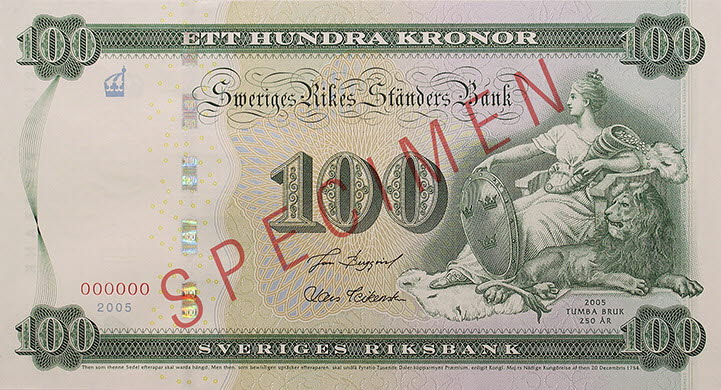
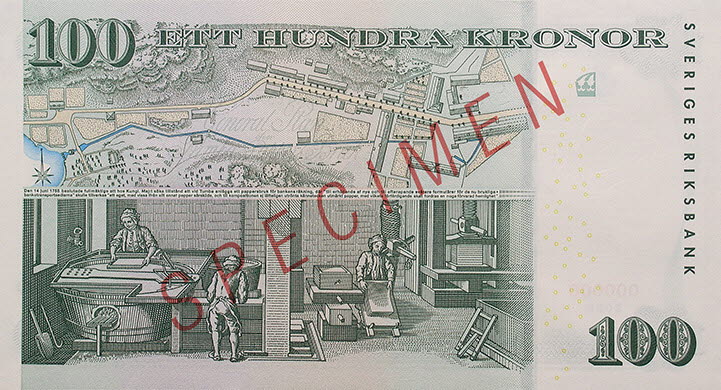
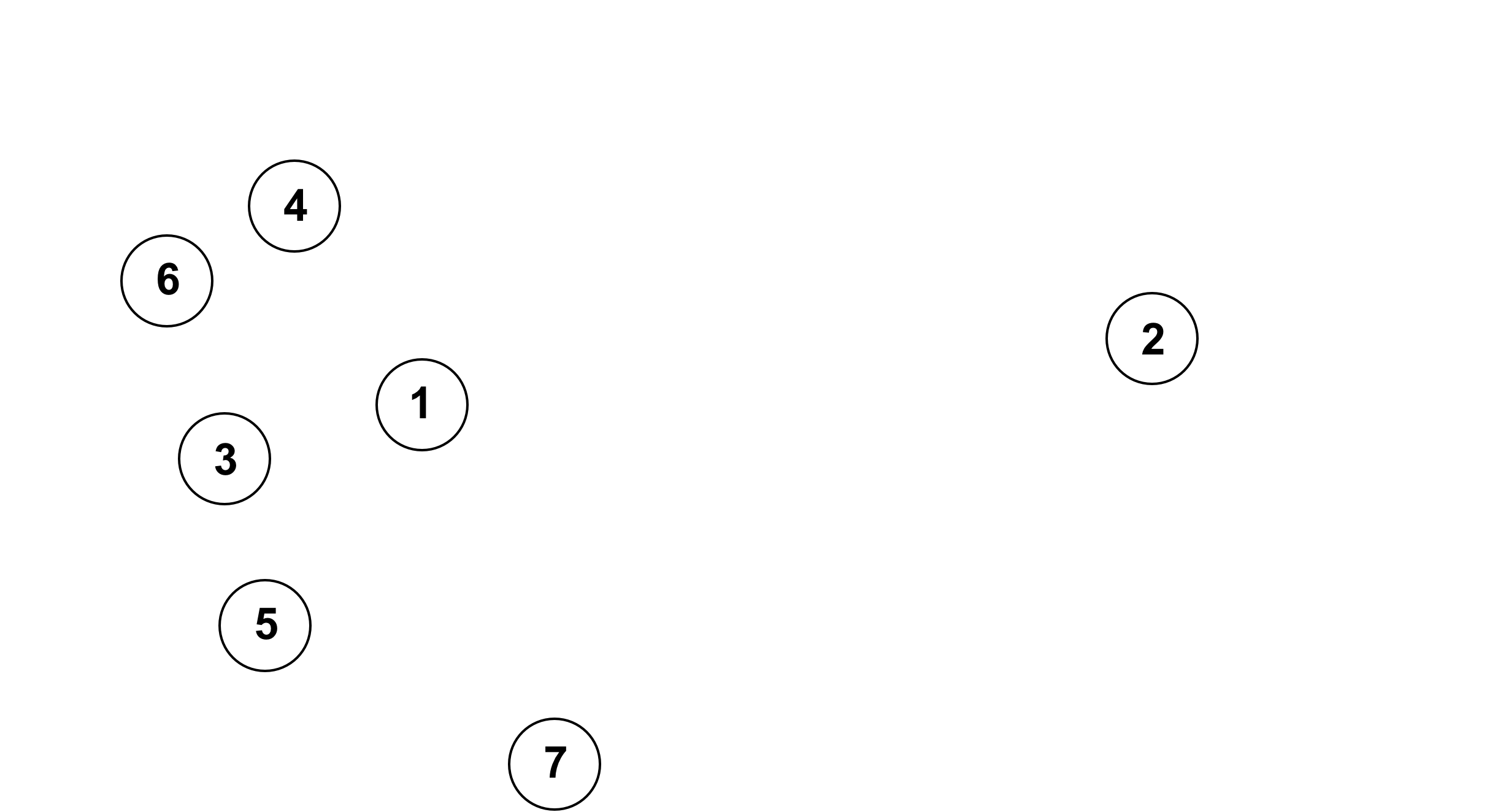
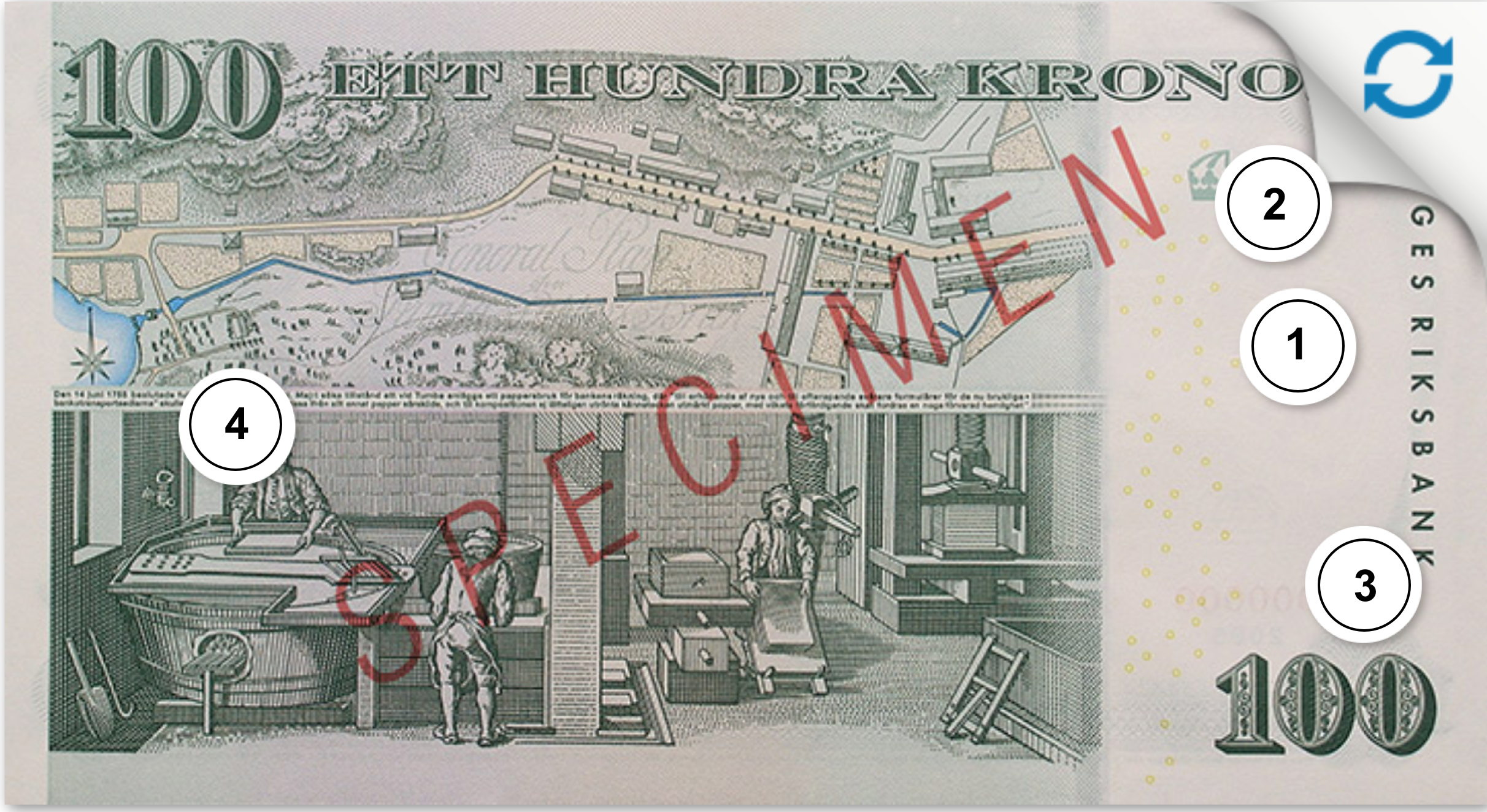


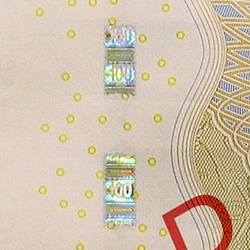
1. Foil strip
Foil strip with hologram woven into the banknote paper that alternatively shows the denomination and the three crown symbol when you tilt the banknote.
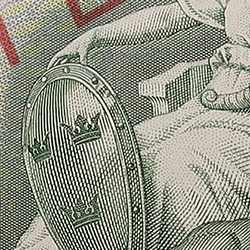
2. Intaglio print
Intaglio print makes the paper feel like a banknote and gives it a noticeable raised surface. Run your thumb over it or scrape lightly with a fingernail. Intaglio printing has been used for the portrait, denominations and the text Sweriges Rikes Ständers Bank.
3. Watermark
Watermark depicting the Swedish lion from 1835–1858 and a royal crown which becomes visible when you hold the banknote to the light. The royal crown appears significantly lighter than the rest of the paper.
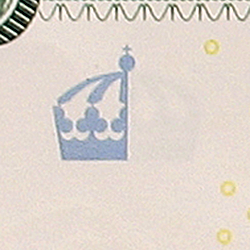
4.See-through picture
A pattern that, together with a matching pattern on the reverse, forms a royal crown when you hold the banknote to the light.
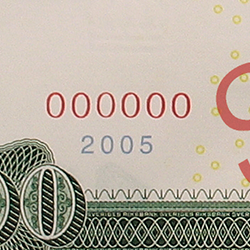
5. Banknote number
The banknote number is printed in red ink that fluoresces (lights up) yellowish-green under ultraviolet light.
6. UV fibres
UV fibres spread across the entire banknote that fluoresce (glow) blue under ultraviolet light.
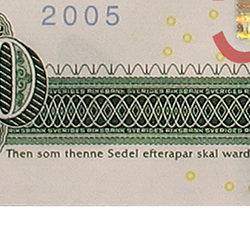
7. Micro- and minitexts
(In translation: Anyone who counterfeits this note shall be hanged; but anyone who demonstrably discovers a counterfeiter shall receive forty thousand dalers in premium copper coins, according to proclamation by His Royal Majesty on the 20th of December 1754.) Then som thenne Sedel efterapar skal warda hängd; Men then, som bewisligen uptäcker efteraparen, skal undfå Fyratio Tusende Daler kopparmynt Præmium, enligit Kongl. Maj:ts Nådige Kungörelse af then 20 Decembris 1754. Text repeated several times: SVERIGES RIKSBANK SVERIGES RIKSBANK SVERIGES RIKSBANK Text repeated several times: SWERIGES RIKES STÄNDERS BANK SWERIGES RIKES STÄNDERS BANK
1. Watermark
Watermark depicting the Swedish lion from 1835–1858 and a royal crown which becomes visible when you hold the banknote to the light. The royal crown appears significantly lighter than the rest of the paper.

2. See-through picture
A pattern that, together with a matching pattern on the obverse, forms a royal crown when you hold the banknote to the light.
3. UV fibres
UV fibres spread across the entire banknote that fluoresce (glow) blue under ultraviolet light.
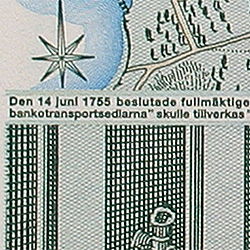
4. Minitext
The text, based on a decision by the Riksbank council in 1755, announces that the bank intends to found a paper mill in Tumba (in translation: On the 14th June 1755, the Riksbank Council decided to apply for permission from His Royal Majesty for the Riksbank to found a paper mill at Tumba where the manufacture of new and more difficult to counterfeit forms for the now common bank transport bills would be carried out on the bank’s own, special paper with a composition that could not easily be copied and would remain a closely guarded secret.): Den 14 juni 1755 beslutade fullmäktige att hos Kungl. Maj:t söka tillstånd att vid Tumba anlägga ett pappersbruk för bankens räkning, där till erhållande af nya och till efterapande svårare formulärer för de nu brukliga bankotransportsedlarna skulle tillverkas ett eget, med vissa ifrån allt annat papper särskilde, och till kompositionen ej lätteligen utrönta kännetecken utmärkt papper, med vilkets förfärdigande skall fordras en noga förvarad hemlighet.
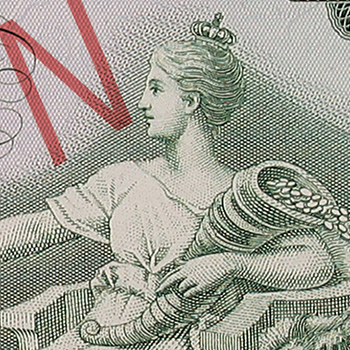
1. Mother Sweden
Mother Sweden in intaglio print. The same design as executed by Julius Kronberg for the 1890 banknote series. The text 2005 Tumba Bruk 250 år (2005 Tumba Papermill 250 years) can be found below the vignette.

2. Warning for counterfeits
Minitext that can be read with the aid of a magnifying glass (in translation: Anyone who counterfeits this note shall be hanged; but anyone who demonstrably discovers a counterfeiter shall receive forty thousand dalers in premium copper coins, according to proclamation by His Royal Majesty on the 20th of December 1754.): Then som thenne Sedel efterapar skal warda hängd; Men then, som bewisligen uptäcker efteraparen, skal undfå Fyratio Tusende Daler kopparmynt Præmium, enligit Kongl. Maj:ts Nådige Kungörelse af then 20 Decembris 1754.
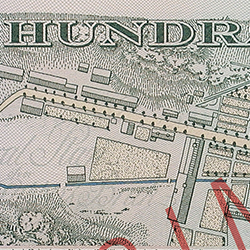
1. Tumba Papermill
Blueprint of Tumba Papermill from 1804.
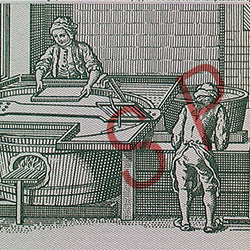
2. Paper manufacturing
Picture of paper manufacturing from Denis Diderot’s French encyclopaedia from 1751-1780.

3. Decision to found Tumba Papermill
Minitext that can be read with the aid of a magnifying glass. The text, based on a decision by the Riksbank council in 1755, announces that the bank intends to found a paper mill in Tumba (in translation: On the 14th June 1755, the Riksbank Council decided to apply for permission from His Royal Majesty for the Riksbank to found a paper mill at Tumba where the manufacture of new and more difficult to counterfeit forms for the now common bank transport bills would be carried out on the bank’s own, special paper with a composition that could not easily be copied and would remain a closely guarded secret.): Den 14 juni 1755 beslutade fullmäktige att hos Kungl. Maj:t söka tillstånd att vid Tumba anlägga ett pappersbruk för bankens räkning, där till erhållande af nya och till efterapande svårare formulärer för de nu brukliga bankotransportsedlarna skulle tillverkas ett eget, med vissa ifrån allt annat papper särskilde, och till kompositionen ej lätteligen utrönta kännetecken utmärkt papper, med vilkets förfärdigande skall fordras en noga förvarad hemlighet.
Facts commemorative banknote
Valid from 26 May 2005.
